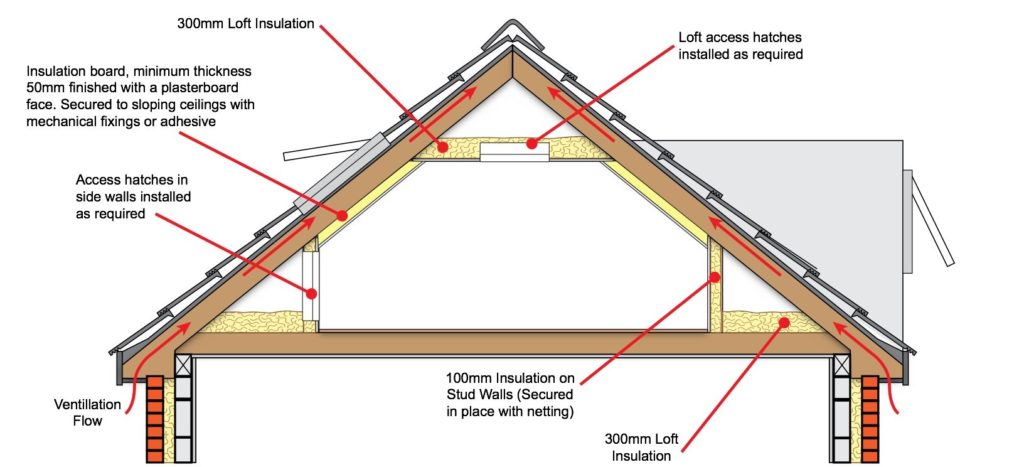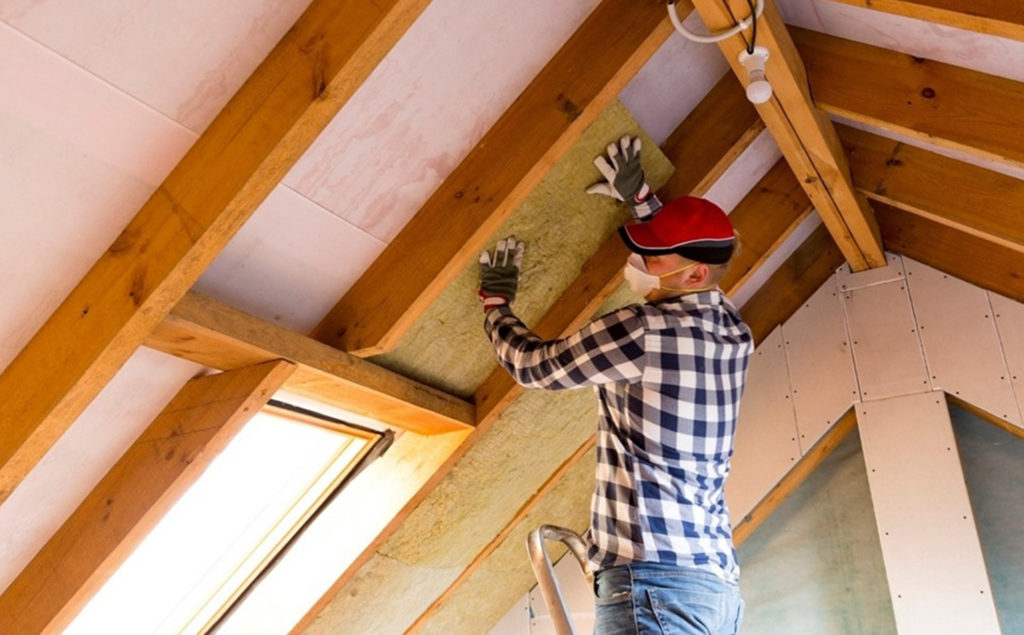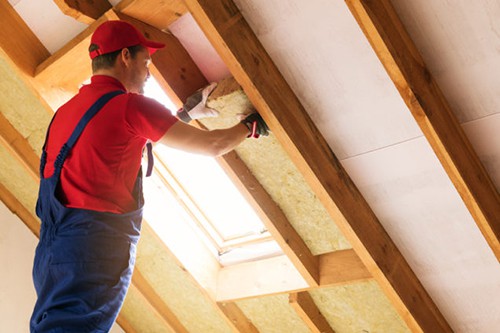Euro Energy Group have helped thousands of residents across the country insulate their lofts and attics in order to retain heat within their homes.
Room in Roof Insulation, often called Attic/Roof Space Insulation sounds more complicated than it is. It’s basically insulation of an additional room in the roof area that has access via a staircase and one or more windows installed. Room in Roofs often have no insulation within the walls and as a result, a large amount of heat can be lost in your home.
Roof Space Insulation is made up of thermal boards that are placed over existing plasterboard and fibre insulation which you would find in normal loft insulations. This creates a thermal barrier and helps trap heat inside your home.


Transform your underutilised loft space into a comfortable and energy-efficient space with room in roof insulation. This versatile insulation solution is perfect for many homes, and with available grants and funding, it’s an affordable way to boost your EPC rating and reduce energy bills.
Key benefits of room in roof insulation include:
Learn more about how room in roof insulation can transform your home and unlock potential savings.

Room In Roof Insulation is where insulation boarding is installed in between the rafters underneath the existing plasterboard walls to help keep the heat inside. The rigid foam insulation boards are generally made from polystyrene or polyurethane.
Insulation boards are placed in between the space in the loft rafters and provide a protective layer against the cold outside, they also keep warm air inside the building. This type of firm insulation will create a completely waterproof barrier that prevents the warm air escaping.

During our pre-installation assessment, our team will ensure you are picking the correct insulation for your home. Key requirements for Room in Roof Insulation include;
– The room must have a staircase where it is possible to walk down forwards (no attic ladders)
– The height of at least half of the walls must not exceed 1.8 meters
– Rafters must be adequately ventilated to avoid condensation building
– Dam, mould, rot should not be present and the roof should not be damaged or weakened.

Loft insulation in the traditional sense involves insulation being laid on the loft floor between the joists with an additional layer laid on top at right angles. This type is most common and is usually made from mineral wool, in the form of soft rolls.
If your loft space is unused and hasn’t been insulated in the last 20 years you should consider installing this regular type of loft insulation.
However, if you do use your loft as a living space or for excess storage it’s likely Room In Roof Insulation would be a better fit for your needs.
Room In Roof Insulation won’t be visible, as it’s inserted between the rafters behind walls or plasterboard.